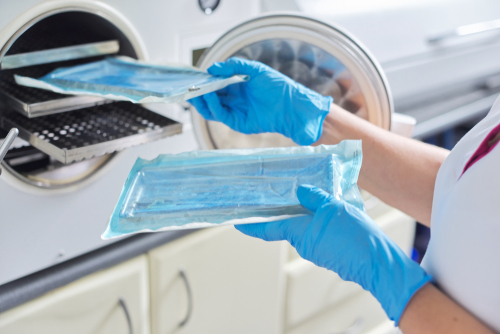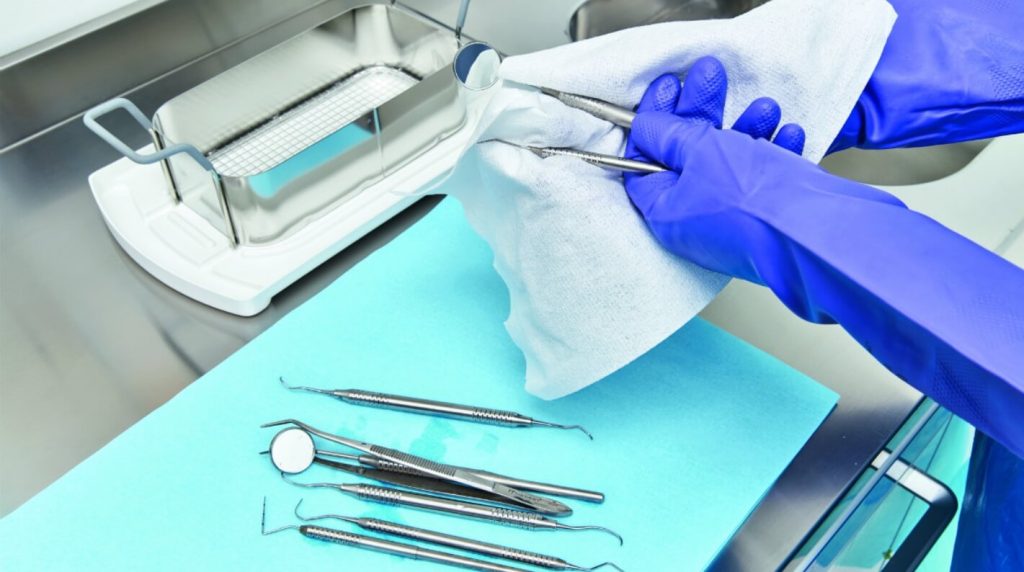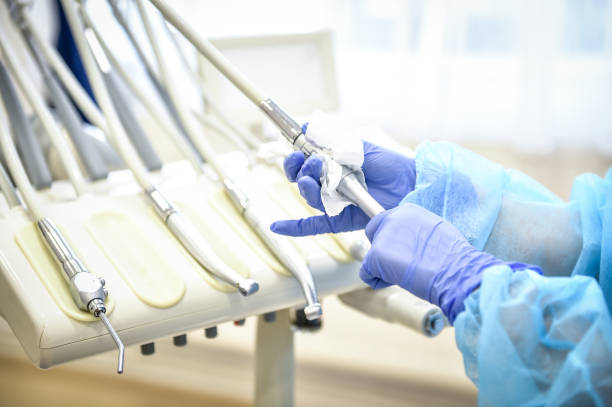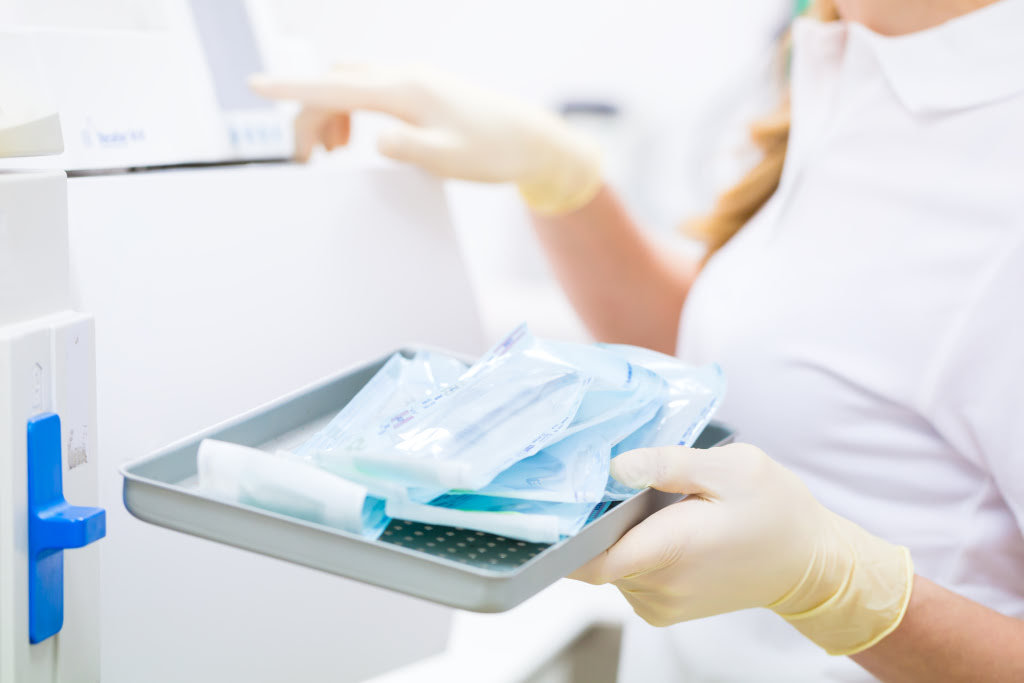Sterilizing and maintaining dental instruments and handpieces
Keeping dental instruments and handpieces sterile, clean and well-maintained is essential.
So it’s important to set up and organize your sterilization lab to properly clean the dirty instruments.
Tips for sterilizing and maintaining your dental instruments and handpieces
Having an efficient and organized lab to prevent cross-contamination will help your workflow.

Have a dirty side and clean side
And it’s important to have good separation and signage between the two areas so that the signage will clearly show:
This is the area for dirty instruments. This is the area for clean instruments and have a clear separation and a one-way flow for the instruments.
As far as maintaining dental handpieces, if they undergo regular maintenance such as oiling motors, that will help extend their lifespan and helps them maintain optimal performance.
Proper oiling intervals
Check the manufacturer’s recommendations for oiling intervals.
Certain handpieces will need to be oiled at certain intervals.
Make sure you use the right type of oil and apply it to the specified parts of the handpiece. And it’s probably better to clean the handpiece before oiling to remove any debris.
Sterilizing the instruments
As far as the sterilizing the instruments: it’s going to be just as crucial to help prevent infections and ensure patient safety.
The best practice is to have a good pre-cleaning protocol where the instruments are rinsed after use to make sure any visible debris is removed before sterilization.
It can be a good cleaning protocol to use an ultrasonic cleaner to remove any biofilm and debris from the instruments.

Follow the manufacturer’s instructions for using the proper solutions and for the duration of time in the ultrasonic machine. Certain sharp cutting instruments may also need a soak in surgical milk.
For example, distal end cutters for orthodontic wire cutting have sharp cutting surfaces, and a surgical milk should be used before sterilizing to help protect the sharp surfaces.
Ultrasonic cleaners use a high frequency sound wave to remove debris from the dental instruments.
The best practice is to make sure you don’t overcrowd these ultrasonics.

Make sure:
- The instruments are fully submerged and not touching each other.
- You’re using a cleaning solution specifically designed for ultrasonic cleaners.
- You rinse the instruments thoroughly with clean water to remove any residual solution.
- You may want to use a cassette to keep certain type or sets of instruments together.
As far as sterilization, you want to use autoclaves or other FDA cleared sterilizers such as Statims to disinfect the instruments. Make sure the sterilizers are regularly maintained and tested.
It’s going to be important to monitor your sterilizer and make sure that it’s always working properly. Certain chemical indicators on the bags will show a certain temperature was reached to change the indicator on the bag to show it was sterilized.
Also, you can use certain biological indicators to make sure that the sterilization conditions are met.
A spore test can be used that’s put in the machine and sterilized, and then put into an incubator to make sure that you’re achieving the proper sterilization.
Packaging instruments for sterilization
Proper packaging is going to help make sure that the instruments remain sterile until used.
For this the best practice would be to use a sterilization pouch or a wrap designed for dental
instruments.
Make sure the packaging’s properly sealed, and make sure that there’s no overloading in the
autoclave or the statim.

Make sure that everything’s clearly labelled on each package so that you know the contents and any relevant information.
You can arrange the instruments to make sure that the steam can circulate effectively.
You can select a cycle to make sure that it matches the type and the load of instruments.
And then there needs to be regular maintenance and checks to make sure it operates correctly.
Use your spore testing and do the maintenance to check the seals and add water as needed.
Autoclaves, which may take a little bit longer for sterilization, can be helpful for large loads of instruments to clean.
Have a good system for sterilizing and maintaining dental instruments and handpieces
Make sure your sterilization lab is set up in an organized and clear way with good signs and separate areas for one way traffic to avoid cross contamination.
Make sure that the contents of the package are clearly visible or labelled.
And then make sure to have a system that’s posted, that everyone knows what to do for each step.
And make sure that you test the equipment regularly to make sure that the sterilizers are working properly.
Make sure that the ultrasonic solution is changed regularly. And as far as the dental handpiece, make sure that things are maintained with the proper lubrication as needed.

